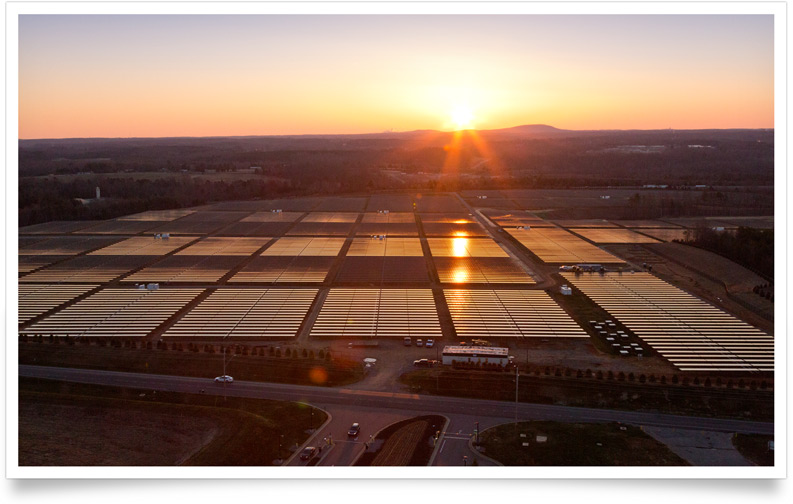Tech companies may be savvy innovators, but the electricity they need to power their businesses can also make them energy hogs. The giant data centers that store all of our e-mails, process our search requests, and stream our favorite movies rely on whopping amounts of electricity — often generated by coal and natural gas. Cloud computing may be making our lives easier and more entertaining, but it’s taking a toll on the planet.
According to a recent Greenpeace report, all of those computer servers that allow us to instantly post our latest photos, listen to music, and access vast quantities of data on the Internet account for 2 percent of all worldwide carbon emissions. Greenpeace says that if you add up all of the electricity used by data centers and the networks connecting our web devices, the IT industry trails only five major countries in energy use. With the electricity demand of Internet companies expected to soar in the coming years as millions of people get online and share more content, the climate impact of the tech boom is becoming harder to ignore.
California tech titans leading the charge on clean energy
The good news is that some of the Silicon Valley’s biggest tech companies are working to reduce their carbon footprint. Companies that rely heavily on cloud computing —Apple, Facebook, Google, and Salesforce — have set goals to power impressive amounts of their data centers with renewable energy. Information provided on these companies’ websites boasts about their progress toward sustainability, at least partly in response to criticism by Greenpeace and others in recent years for depending on carbon-intensive energy sources. But it may also make good business sense as renewable energy costs continue to drop.
Apple commits to power 100% of its stores, offices, and data centers with renewable energy
Already, the company says all four of its data centers — located in North Carolina, Oregon, Nevada and California — rely entirely on clean energy sources, including biogas, wind, solar, and hydropower. Clean energy powers nearly all of Apple’s offices around the world and will supply all of the electricity needs at its new 2.8-million-square-foot headquarters in Cupertino when it’s completed in 2016, according to the company.

Apple’s solar farm in North Carolina. Source: Apple
Tech demand pushing utilities to add more renewable energy to the grid
Facebook is getting friendlier with clean energy, striving to power a quarter of the energy used by its global data centers with renewables by 2015. The social networking powerhouse says its decision to locate its new data center in Iowa was based on an opportunity to develop a new wind project in the state. When it opens in 2015, the data center will depend entirely on wind power supplied by a nearby wind farm operated by MidAmerican Energy. To meet the electricity demands of Facebook, the utility made the single largest purchase of wind turbines in the world and shelved plans to build a new nuclear facility. Facebook noted in a blog post that the project will add up to 138 MW of new wind capacity to the grid in Iowa – “more than what our data center is likely to require for the foreseeable future.” That means many more people will have access to wind power than would have if Facebook had not decided to locate its data center there.
Google — using and investing in renewable energy
The search giant says it is using renewable energy to power more than 34 percent of its operations. Among the tech giants, it pioneered the practice of buying renewable energy through large-scale power purchasing agreements (PPAs) with utilities and wind farms near their data centers in Oklahoma, Iowa, Texas, and Sweden. So far, Google says it signed seven contracts for 1040 MW of wind energy — enough to power over 320,000 U.S. households. Also, Google says its decision to install huge solar panels on its Mountain View campus was the largest corporate installation of its kind and now generates 1.9 MW, enough electricity to power 30 percent of the peak load of its headquarters.
Google is also a big investor in clean energy, having committed more than $1 billion to wind and solar projects with a capacity of more than 2 GW. Those investments will likely generate profits for Google since they will generate over 5 billion kWh annually — equivalent to that consumed by approximately 500,000 homes.
A good environmental and economic choice
Using and investing in renewables not only makes these companies leaders in tackling climate change, but could help boost their bottom lines. By turning away from the uncertainty of fossil-fuel-powered energy, tech companies are helping to pave the way for a more sustainable and profitable future in a world increasingly dominated by technology.
